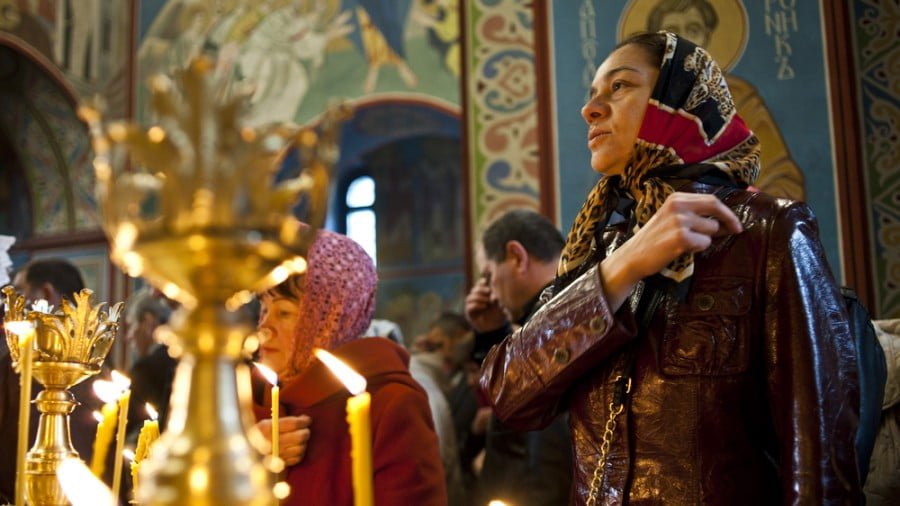Don’t Fall for the Alt-Media Narrative on Armenia and Azerbaijan
Most of the Alt-Media Community is propagating the narrative that Armenia is a victim of Azerbaijani aggression after their latest clashes over the past week, though the reality is that Armenia is more than likely the one that provoked the violence in a Machiavellian attempt to manipulate Russia into decisively taking its side on the frozen Nagorno-Karabakh conflict at the expense of the Russian-Turkish Strategic Partnership per Moscow’s mutual defense obligations to Yerevan under the CSTO, with this entire scenario serving American geostrategic objectives regardless of its ultimate outcome.
Clashes In The South Caucasus
The South Caucasus states of Armenia and Azerbaijan are once again clashing with one another, though it isn’t over the frozen Nagorno-Karabakh conflict like the last time this happened in 2016, but over a part of their internationally recognized border. It’s unclear exactly who started it and why since each side predictably blames the other, but that hasn’t stopped the Alt-Media Community from kicking into full gear propagating the narrative that Armenia is a victim of Azerbaijan aggression. The reality is more than likely the opposite, however, since a solid case can be made arguing that Armenia is the one that provoked the violence in a Machiavellian attempt to manipulate Russia into decisively taking its side on this issue at the expense of the Russian-Turkish Strategic Partnership. The present analysis debunks the Alt-Media narrative by providing crucial context into this latest flare-up that’s missing from most interpretations on this topic but is necessary for understanding the grand strategic dynamics at play behind the scenes, especially regarding American interests.
The Narrative vs. The Facts
The Alt-Media Narrative is that Azerbaijan is a joint “Israeli“-Turkish proxy state that’s hellbent on exterminating the Armenians of Nagorno-Karabakh for ethno-religious reasons. Armenia is presented as a Christ-like “savior state” that prevented what would have otherwise been their imminent genocide had it not intervened in the conflict that started just prior to the dissolution of the USSR. Yerevan’s victory is regarded as morally right, yet the Armenians are nevertheless seen as having received the short end of the stick by having their democratic right to unite their territories into a single state denied for geopolitical reasons that don’t correspond to the on-the-ground reality. As such, their supporters claim that they’re victims of an international plot, which in turn affords them even more moral superiority than they previously had. Armenia’s reluctance to recognize the de-facto independence of what it describes as “Artsakh” is seen as a calculated chess move to make the best of a diplomatically difficult situation and bide time until the right moment to reunite the ancient Armenian lands.
For as convincing of a case as the Armenians seem to have, the facts paint a somewhat different picture.
The roots of the Armenian-Azeri conflict are deep and decades-old, having been taken advantage of by Stalin for classic divide-and-rule purposes in order to maintain Soviet control over the South Caucasus. Each side has legitimate grievances but they’re both also guilty of ethno-religious attacks against the other. Pent-up frustrations exploded into all-out war at the end of Gorbachev’s failed experiment with glasnost, when the Armenians of Nagorno-Karabakh saw an opportunity to unite with their titular republic on the pretext that they were facing imminent ethnic cleansing if they failed to do so. In turn, they themselves carried out ethnic cleansing against the Azeris of the region and eventually won the war, but remained universally recognized as an integral part of Azerbaijan even by Armenia itself. Practically no Azeris live in Occupied Nagorno-Karabakh (ONK) nowadays, with this region and Armenia being some of the most ethnically homogenous places on the planet. Those Azeris who fled are denied their right of return just like the Palestinians are.
The Ideological Motivations Of Alt-Media’s Spin
The Alt-Media Community refuses to recognize those “politically inconvenient” facts for several reasons. Firstly, the Armenians are Christians and the conflict has regrettably been painted as one of the hottest fault lines in the so-called “Clash of Civilizations” between that religion and Islam. This interpretation inadvertently feeds into the US’ divide-and-rule stratagem for maintaining control over Eurasia’s ultra-diverse landmass across the 21st century, but the typically “anti-American” and similarly “Muslim-friendly” Alt-Media Community ironically doesn’t recognize this because Armenia is Russia’s mutual defense ally through the CSTO. That in turn makes them feel obligated to support it no matter what so as to “show solidarity with Russia” even though Moscow itself doesn’t unconditionally support Armenia, especially nowadays, which will be touched upon later in this analysis. Of relevance, some folks have recently taken to comparing Nagorno-Karabakh with Crimea ever since the latter’s 2014 reunification with Russia in order to press the same for the former vis-a-vis Armenia.
Another pertinent motivation stems from the ideological affinity that many of the Alt-Media Community’s members have for Iran. Azerbaijan is a close ally of “Israel” and was previously accused of allowing the self-professed “Jewish State” to base drones on its territory for use against the neighboring Islamic Republic to the south. Although Iran is a cosmopolitan society full of many different ethnic groups and confessions, there’s still a strong degree of what can be described as “Shia nationalism” for lack of a better word. As a result, many of Iran’s supporters regard majority-Shia Azerbaijan’s alliance with “Israel” as an almost sacrilegious betrayal of the sect that can never be justified. Accordingly, those who hold this view cannot in good conscience allow themselves to align with Azerbaijan on any issue whatsoever even in those instances where it might be innocent of the accusations being leveled against it, as this analysis argues is the case in respect to the latest clashes with Armenia.
Some Curious Observations
Now that the reader is acquainted with the complexity of this situation and the ideological motivations for Alt-Media’s one-sided coverage thereof, it’s time to point out some curious observations that can be made about the latest clashes. The first relates to their timing, since they occurred right after Armenia’s majority-Western sympathizers expressed shock at Turkey’s controversial decision to reconvert Hagia Sophia from a museum into a mosque. This prompted a heated discussion about the rights of minorities in the country, Turkey’s historic treatment of such groups, and reminded many of the “Clash of Civilizations” narrative. In addition, the clashes happened at a time when Turkey is already embroiled in several hot and cold conflicts all around its immediate periphery and “Near Abroad” in Iraq, Syria, the Eastern Mediterranean, and Libya. In other words, it’s not in the most ideal position to support its Azerbaijani ally in the event of hostilities if called upon by Baku to do so even though it would likely heed that request in such a scenario despite being somewhat overextended as it is.
The other curious observation is the location of these clashes themselves since they’re not taking place in ONK but along their undisputed international border further north in extremely close proximity to regional pipelines and the BTK railway. The first-mentioned supplies resources to Turkey and others further afield whereas the second one is a crucial component of the Turkish-Chinese “Middle Corridor” which aims to connect East Asia with Europe via Central Asia, the Caspian, the Caucasus, and Asia Minor. In addition, Azerbaijan’s Mingachevir reservoir is located nearby too, and it was in response to a question about the possibility of an Armenian attack against this megaproject that the spokesman for the Azerbaijani Defense Ministry provocatively hinted at striking Armenia’s Metsamor nuclear power plant in retaliation for the purpose of deterring this mutually disastrous scenario. As can be seen by these two curious observations of timing and location, Azerbaijan is actually disadvantaged unlike Armenia, which suggests that the latter caused the clashes.
The Armenian Agenda
The question that one would naturally wonder at this point is why Armenia would do such a thing when it’s already solidly in control of ONK and presumably stands to lose some of its moral standing if it’s exposed as an aggressor. The answer is that this is a Machiavellian attempt to manipulate Russia into decisively taking its side against Azerbaijan, something that Moscow has hitherto been reluctant to do. Armenia feels very uncomfortable with the Russian-Turkish Strategic Partnership and Moscow’s renewed relations with Baku over the past half-decade, both of which it wants to ruin by prompting its partner to intervene after the latest clashes, preferably on its side of course. The reason why Armenia staged its provocations along its internationally recognized frontier with Azerbaijan is because this forces Russia to get involved per its mutual defense obligations under the CSTO to protect its partner’s sovereign territory after Baku retaliated, unlike if the flare-up happened inside internationally recognized Azerbaijani territory (ONK) instead as is usual.
Cynics might say that Azerbaijan also has a similar interest, albeit in provoking the latest clashes so as to paint Armenia as the aggressor and thus as an irresponsible regional state that’s trying to provoke Russia into a possible war with Turkey. The purpose in doing so, those who hold this view speculate, is to get the international community to pressure Armenia to comply with its international legal obligations to withdraw from Azerbaijan’s universally recognized territory (ONK). That theory can’t be immediately discounted since it’s at least superficially plausible enough to be considered in principle, but it overlooks Azerbaijan’s immense military buildup over the past two decades which means that it doesn’t have to resort to such Machiavellian schemes if it really wants to liberate Nagorno-Karabakh. It also ignores the observation that Azerbaijan’s Turkish ally is somewhat overextended nowadays as was earlier explained and also doesn’t want to jeopardize its strategic partnership with Russia if such a scenario can be avoided. Thus, both arguments debunk this theory.
The American Agenda
As always, the US has a stake in this situation, just as it does in every other divisive one across the Eurasian landmass. The author wrote a two–part analysis back in 2016 the last time that Armenia and Azerbaijan seriously clashed with one another (albeit that time in ONK) where he argued that the landlocked country is trying to provoke the very same scenario of a Russo-Turkish War that was earlier discussed. This was followed up a year later by a piece about “Russia’s New Thinking Towards Armenia And Azerbaijan: An ‘Obstructionist’ vs. An ‘Integrationist’“, which explained why Moscow had come to regard Yerevan as an obstacle to Eurasian integration while seeing Baku as a facilitator of the same. Shortly thereafter, he exposed how “The US-Based Armenian Lobby Is On A Mission To Provoke Azerbaijan And Russia“. Half a year later in April 2018, the author warned that “The Yerevan Protests Might End Armenia’s Unconvincing ‘Balancing’ Act Between Russia And The West” and then concluded that “What Happened In Armenia Was A Defeat For Democracy” after the US-backed Color Revolution there succeeded.
Part of the blame for that regime change admittedly lies with Russia’s failure to properly explain its own “balancing” act between Armenia and Azerbaijan to the former’s nationalist-inclined population, which inadvertently ceded the narrative space to American infowar forces to claim that Russia was an “unreliable ally”
and thus provoke extreme opposition to Armenia’s Russian-friendly leader at the time. The author touched upon this in the analysis that he published in May 2018 about “Russia’s Grand Strategy In Afro-Eurasia (And What Could Go Wrong)” one month after Armenia’s so-called “Velvet Revolution”. Although post-Color Revolution Armenia tried to dispel Russian suspicions of its new leadership’s geopolitical motives by attempting to strengthen relations over the past two years, it passively facilitated the propagation of Russophobic narratives throughout society, as noted by prominent Russian-Armenian and head of RT Margarita Simonyan in a Russian-language Facebook post last weekend that should be Google Translated by all interested readers.
The American-Armenian Axis
The resultant scenario that’s rapidly emerging is of an American-Armenian axis, though one that’s more about strategic coordination than any actual alliance. Both countries want to push Russia to decisively choose between Armenia and Azerbaijan, thus undermining its carefully calibrated “balancing” act. If Moscow chooses Yerevan, then it’ll reverse all of the recent gains that it made with Baku and jeopardize the future of the Russian-Turkish Strategic Partnership, which would be to America and Armenia’s strategic benefit. Should it continue to present itself as “neutral” (which it technically is), then Armenian nationalists will interpret that as no different than siding with Azerbaijan, which will in turn push their leadership into gradually replacing Russian influence with its American rival’s in all spheres except for the military one (which is practically impossible to do for obvious geopolitical reasons). This would complete the American scenario of encircling Turkey through that recently intensified eastern front and the ones in Iraq, Syria, the Eastern Mediterranean, and North Africa.
What’s so interesting about all of this is intrigue is that it proves that Armenia has succeeded in reversing its power relationship with Russia. The country is no longer taken for granted by its larger ally as being completely under its influence like it supposedly once was, but is operating independently in advance of its own national interests as it understands them, albeit in tacit coordination with the US because of their shared strategic interests in this respect vis-a-vis Russia and Turkey. Armenia couldn’t do this without American support, nor could Belarus, which is doing something similar in trying to play Russia off against the West too. Both “balancing” acts are made possible by America taking advantage of the shortcomings related to Russia’s own “balancing” act, specifically the lack of any convincing narrative component elaborating on its policies and thus preventing the emergence of the same “strategic security dilemma” that has since been exploited. In other words, the US is actively poaching Russian allies by presenting itself as their “balancer” against Moscow.
The Russo-Turkish Solution
It’s too late to repair all the soft power damage that was inadvertently caused by Russia’s inability to retain hearts and minds in Armenia considering that this failure already led to a pro-American regime change that’s since set into motion the very dangerous scenario of the present day, but disaster can still be averted so long as Moscow coordinates every one of its relevant steps with Ankara in order to prevent a war between the two by miscalculation and American meddling. Russia must make it clear that it will only intervene to defend Armenia in the event that its internationally recognized territory is occupied by Azerbaijan or Turkey but will not militarily intercede between them to stop their retaliatory strikes. Turkey, meanwhile, must ensure that its ally doesn’t dispatch troops across the internationally recognized border no matter what otherwise Russia will have no choice but to get involved so as to uphold the legitimacy of the CSTO. Russia and Turkey should also accept that Armenia is becoming an American proxy state and agree to carefully manage this development together.
Realistically speaking, Armenia has no reason to withdraw its forces from ONK because there isn’t any credible enforcement mechanism to ensure its compliance with international law. It also acutely understands its geopolitical importance to Russia, not only in the sense of serving as its military outpost in this strategic space, but also because of how successful it’s been in reversing the power dynamics between the two and thus holding the Damocles’ sword of a regional conflict over Moscow’s head. Russia’s caught in dilemma wherein it doesn’t want another conflict to erupt yet won’t diplomatically intervene on either side to prevent it, but the scenario of another all-out war would be disastrous not only for humanitarian reasons but also because Russia’s soft power would be irreparably ruined if it doesn’t defend Armenia per its CSTO obligations in the event that Azerbaijan and/or Turkey attack its internationally recognized territory beyond whatever is acceptable in self-defense. This worst-case scenario can only be avoided through Russo-Turkish coordination.
Concluding Thoughts
Regardless of whichever side one sympathizes with, it should be objectively recognized that the Alt-Media Community’s coverage of the latest clashes between Armenia and Azerbaijan doesn’t incorporate the American angle that’s crucial to better understanding the geopolitical context in which everything is unfolding. Ideological reasons related to loyally supporting Russian and Iranian foreign policy interests (misguided in the former perception thereof but legitimate enough in the latter) are behind this massive perception management operation, but those who are involved in it (both in terms of actively promoting relevant narratives but also believing the aforesaid) might not realize that they’re inadvertently advancing America’s geostrategic agenda in the process. Everyone has the right to support to support Armenia if they want to for whatever their reasons may be, but they should still acknowledge the moral complexity of doing so since this essentially amounts to supporting America as well even though many wouldn’t ever consciously side with it out of principle.
By Andrew Korybko
Source: One World







